#10 in Vietnam
Popular Lẩu Variations
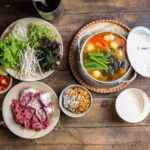
Lẩu Cua Đồng
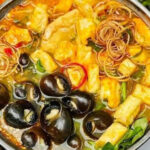
Lẩu Ốc
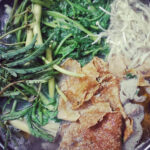
Lẩu Vịt Om Sấu
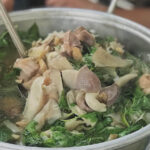
Lẩu Gà Lá É
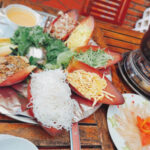
Lẩu Thả

Lẩu Cá Kèo
Lẩu: Ingredients and Preparation
Main Ingredients
Main Cooking Method
Preparation Process
Lẩu: A Deep Dive
Cultural Significance
Taste
Texture
Aroma
Color
Serving Style
Serving Temperature
Accompaniment
Occasions
Seasons
Special Diets
Calories
Popularity
Popular Similar Dishes
- Shabu-shabu
- Sukiyaki
- Instant-boiled Mutton
- Jeongol
- Thai Suki
- Fondue
Popular Dining Area
Lẩu, also known globally as hot pot, is a popular dish in Vietnam featuring a simmering pot of broth placed at the center of the dining table. Diners gather around, cooking various raw ingredients like meats, seafood, vegetables, and noodles directly in the pot.
The broth of lẩu varies from a simple, clear stock to rich, spicy, and aromatic flavors, often reflecting regional specialties and personal tastes across Vietnam. In general, lẩu offers a hearty and warming meal, making it ideal for cooler weather.
The origin of lẩu is believed to be traced back to the three-legged pots from the Zhou dynasty in China. Nowadays, the hot pot’s popularity has spread to many countries, especially in East and Southeast Asia and even some European countries.
In Vietnam, varieties of lẩu vary based on regions, including North, Central, and South. Though they are different in ingredients and flavor, the way locals serve and enjoy lẩu are similar.
After that, the article will cover the advantages and disadvantages of consuming Vietnamese-style hot pot, as well as its differences from shabu-shabu, the Japanese-style hot pot.
Lastly, don’t forget to check some common concerns regarding lẩu and its similar dishes. Now, let’s jump right into the reading to uncover Vietnamese hot pot.
Key Points
Lẩu Images
What Are Common Lẩu’s Ingredients?
Ingredients for lẩu are diverse based on regional touches or preferences. They can be grouped into five main categories, including broth bases, meats and proteins, noodles, vegetables, and herbs and aromatics.
| Ingredient Groups | Examples |
|---|---|
| Broth Bases | Beef bone broth Chicken broth Seafood broth Vegetable broth Spicy lemongrass broth (for lẩu Thái) |
| Meats and Proteins | Beef Chicken Pork Goat meat Seafood (fish, shrimp, squid, clams, mussels) Tofu (firm, soft, or fried) Tofu skin Fish cakes |
| Noodles | Rice noodles Glass noodles Egg noodles |
| Vegetables | Leafy greens (spinach, watercress, lettuce) Bok choy Napa cabbage Morning glory Mushrooms Corn Carrot Potatoes and sweet potatoes |
| Herbs and Aromatics | Thai basil Green onion Dill Lemongrass |
With diverse ingredient options, lẩu comes in various varieties, and it also reflects the Vietnamese region’s tastes and traditions.
What Are Popular Lẩu Variations Based on The Vietnamese Region?
Vietnamese lẩu are abundant in styles and vary significantly across different regions of Vietnam. They reflect the local ingredients, flavor, and cooking traditions. Here are some popular regional variations of lẩu in Vietnam’s three main parts: North, Central, and South.
In Northern Vietnam
Here are three famous hot pots with their distinctive features in Northern Vietnam.
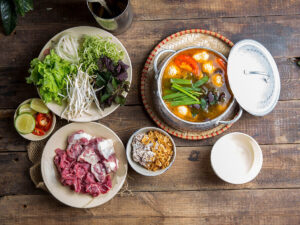
Lẩu Cua Đồng
A variation from Hai Phong, including freshwater crab, often served with red rice noodles, grilled chopped fish, meats, and vegetables

Lẩu Ốc
A snail hot pot featuring beef shank, meatballs, tofu, boiled snails, and fresh vegetables, with a broth that’s sour, sweet, and spicy. Popular in Hanoi.
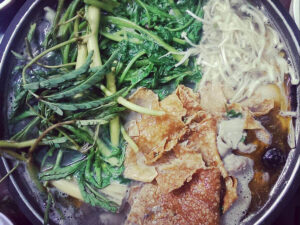
Lẩu Vịt Om Sấu
A duck hot pot with a blend of sour dracontomelon fruit, sweetness from potatoes, and a spicy kick from chili paste and spices.
Next, let’s fly to the Central part of the country and find out what they have for lẩu.
In Central Vietnam
Each region has its own special lẩu styles. Check the below examples for more information about the Central-based lẩu of Vietnam.

Lẩu Gà Lá É
Originating from Phu Yen, this hot pot has a rich and slightly sweet broth paired with Ocimum graveolens leaves, chicken, fresh bamboo shoots, mushrooms, etc.
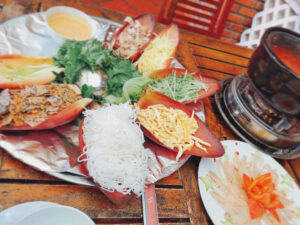
Lẩu Thả
A traditional fisherman’s hot pot from Phan Thiet, featuring freshly caught and seasoned anchovies, served with noodles, fresh herbs, sliced pork belly, and thinly sliced omellete.
Moving on, you’ll explore choices of hot pot delights in Vietnam’s southern part.
In Southern Vietnam
Below are three celebrated hot pot varieties from the Southern region of Vietnam.

Lẩu Cá Kèo
A popular Southern Vietnamese rustic dish featuring mudskipper fish, tomatoes, and served with Glinus herniarioides.
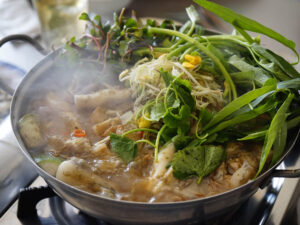
Lẩu Mắm
A distinctive Mekong Delta hot pot made with fermented fish paste and served with vegetables and fish.
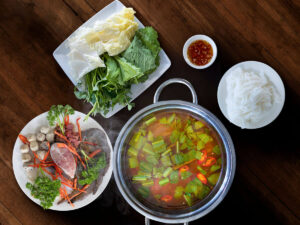
Lẩu Thái
A sour and spicy hot pot inspired by Thai flavors, typically including seafood, thinly sliced beef, tomatoes, and various veggies.
After delving into the regional lẩu variations across Vietnam, let’s now focus on how locals serve and enjoy this communal delicacy.
How To Serve and Eat Vietnamese Lẩu?
Serving and eating lẩu is an interactive and communal dining experience that involves cooking and sharing food at the table.
A hot pot setup includes a portable burner (gas, coal, or electric) with a pot of boiling broth in the center. Raw ingredients are placed around it, and diners cook the food in the broth until it’s cooked.
In the meantime, diners can add noodles to their personal bowls, then use a spider spoon to pick up food items in a boiling broth pot and add the soup later. This is a shared meal, so remember to use separate utensils for handling the soup and ingredients to maintain cleanliness.
Dipping sauces are common accompaniments to lẩu so that diners can dip their desired items in the sauce for more flavor.
In the next part, you’ll have a better view of both the good sides and drawbacks of consuming Vietnamese-style lẩu.
Pros and Cons of Eating Lẩu
Check the following table to unveil lẩu’s pros and cons.
Pros
Cons
After weighing the pros and cons of lẩu, I’ll next compare it with shabu-shabu to understand the dissimilarities between these two popular hot pot styles in two different Asian countries.
Lẩu Vs. Shabu-shabu, What Are The Differences?
In the culinary view between lẩu and Shabu-shabu, I’ll discuss their differences across various aspects, such as popularity, broth composition, ingredient selection, dipping sauces, eating style, cooking methods, flavor profiles, and accompaniments, in the table.
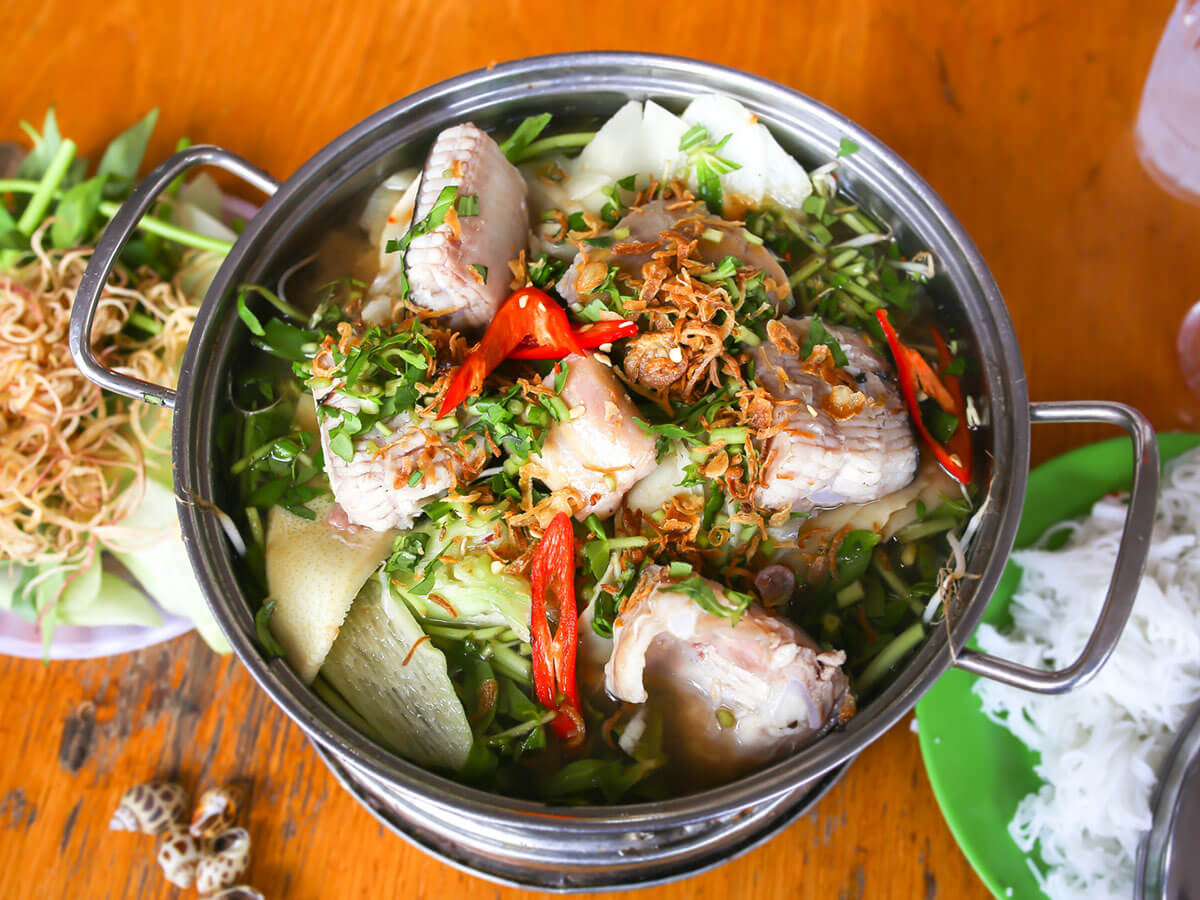
Lẩu
Popularity: Vietnam
Broth: Varied widely, often flavored with local ingredients.
Ingredients: Include different types of meat, seafood, tofu, and vegetables. Specific ingredients can vary by region.
Dipping Sauces: Usually served with sauces varied based on lẩu variation
Eating Style: Ingredients are added to the pot and cooked gradually. Diners transfer food items to their bowls and eat them hot.
Cooking Method: Ingredients are often left to simmer and cook in the broth over time.
Flavor Profile: Broth and ingredients may have bolder flavors due to various herbs and seasonings used.
Accompaniment: Often served with rice noodles and an array of vegetables.
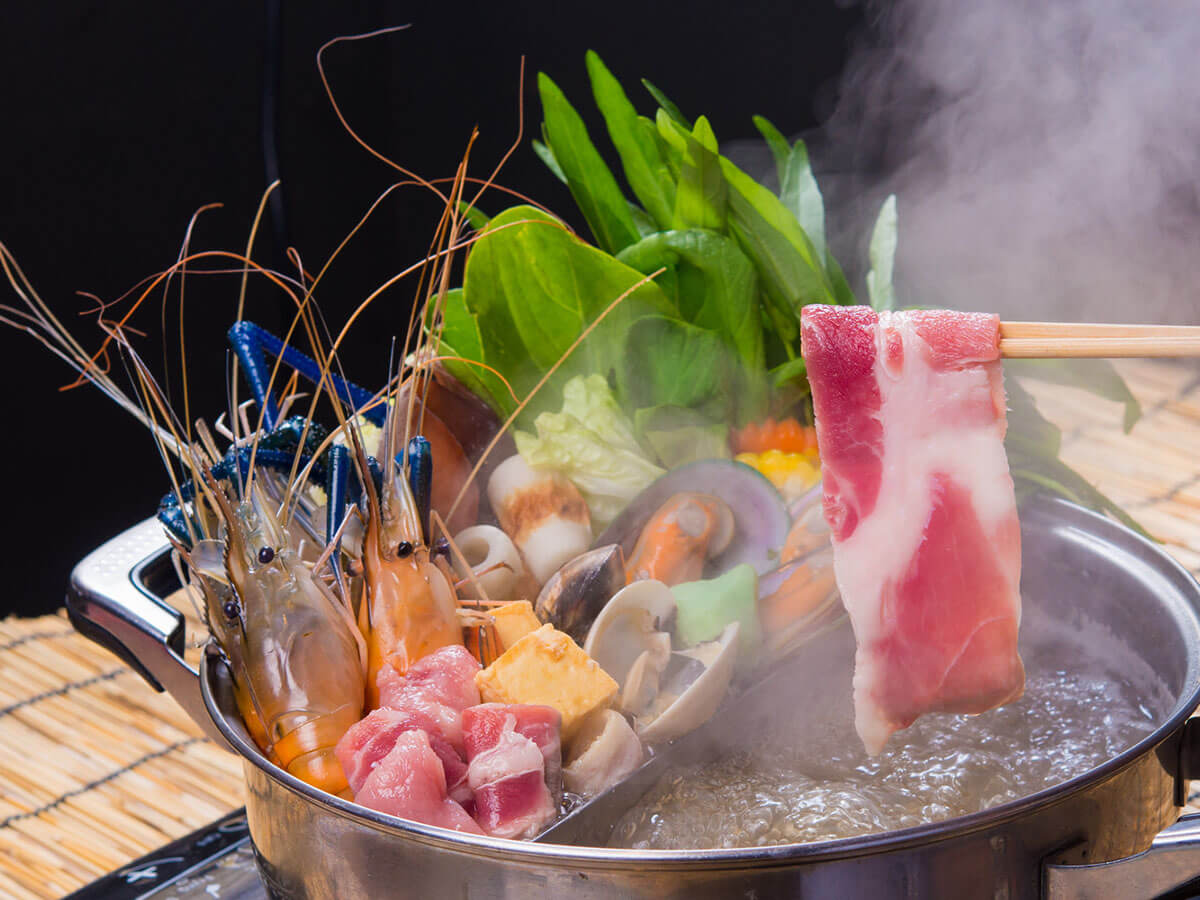
Shabu-Shabu
Popularity: Japan
Broth: Typically a simple dashi made with konbu (kelp).
Ingredients: Commonly uses thinly sliced beef, but can also include pork, chicken, and seafood, along with vegetables and noodles.
Dipping Sauces: Usually served with ponzu (citrus-based sauce) and sesame sauce for dipping.
Eating Style: Ingredients are cooked piece by piece by diners, swished in the pot for a few seconds to avoid overcooking.
Cooking Method: Thinly sliced ingredients are quickly cooked in boiling water or broth, emphasizing their natural flavors.
Flavor Profile: Flavors are subtle and delicate, focusing on the natural quality and taste of the individual ingredients.
Accompaniment: Usually served with a bowl of rice.
Read on to see other commonly asked questions about hot pot in Vietnamese style.



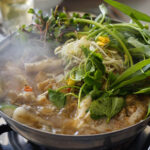
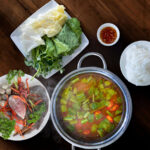
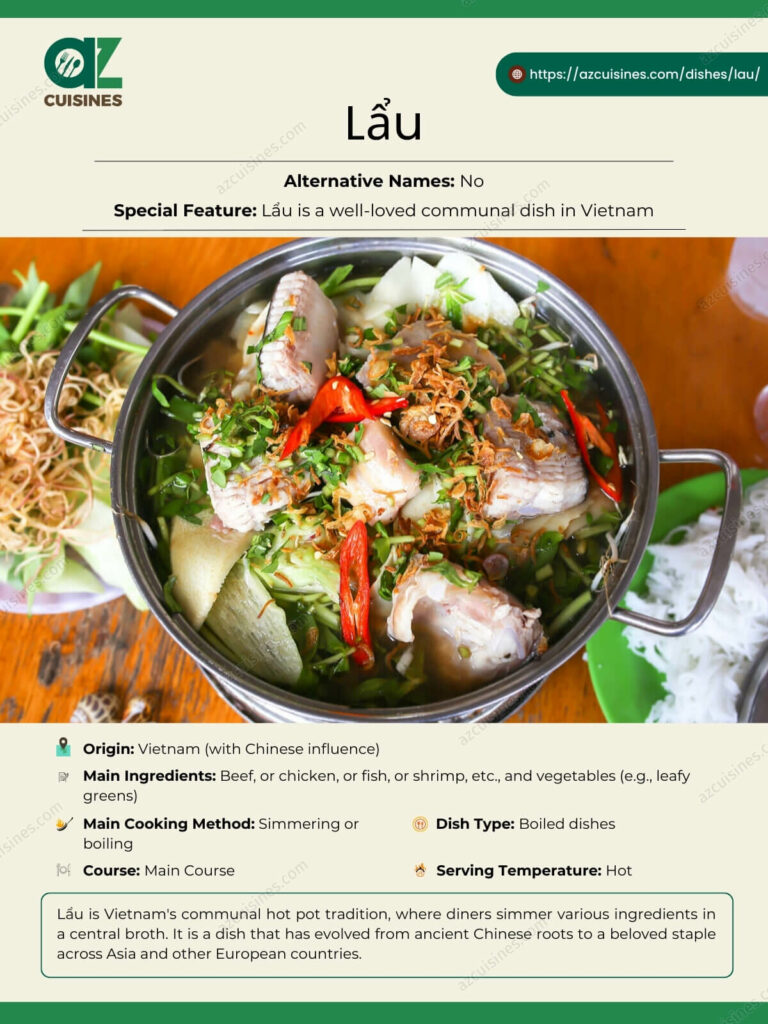
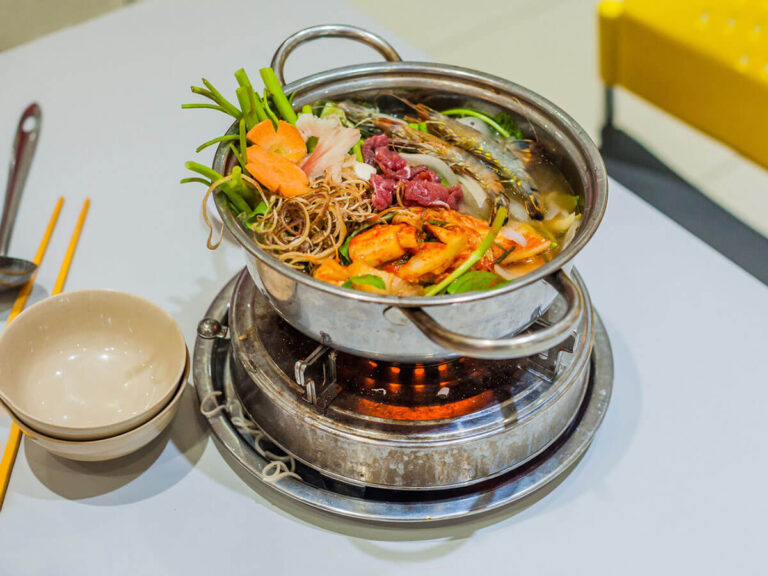
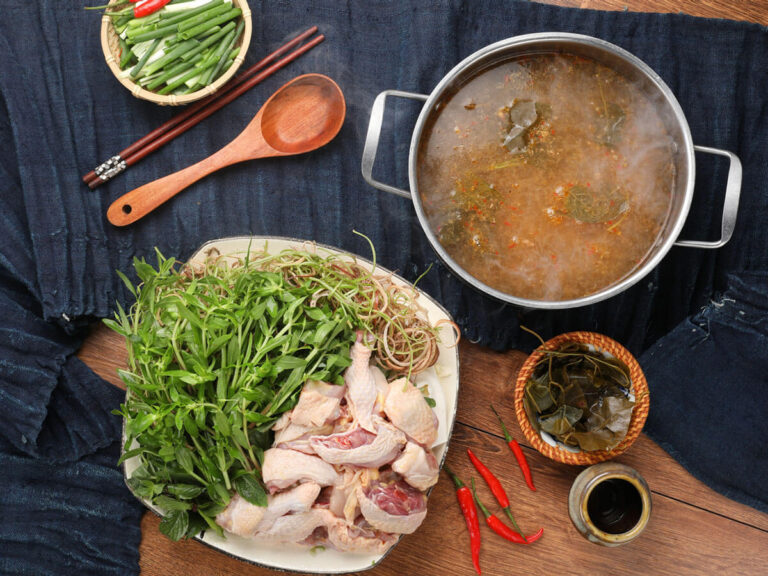


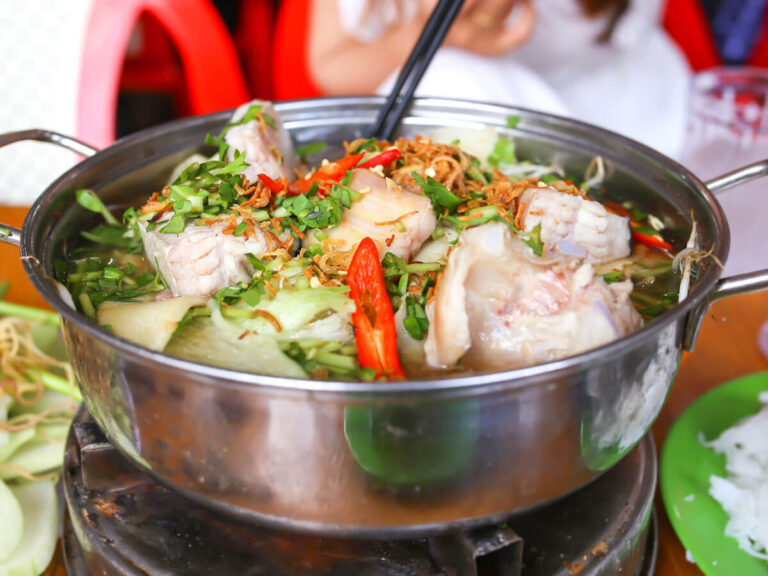

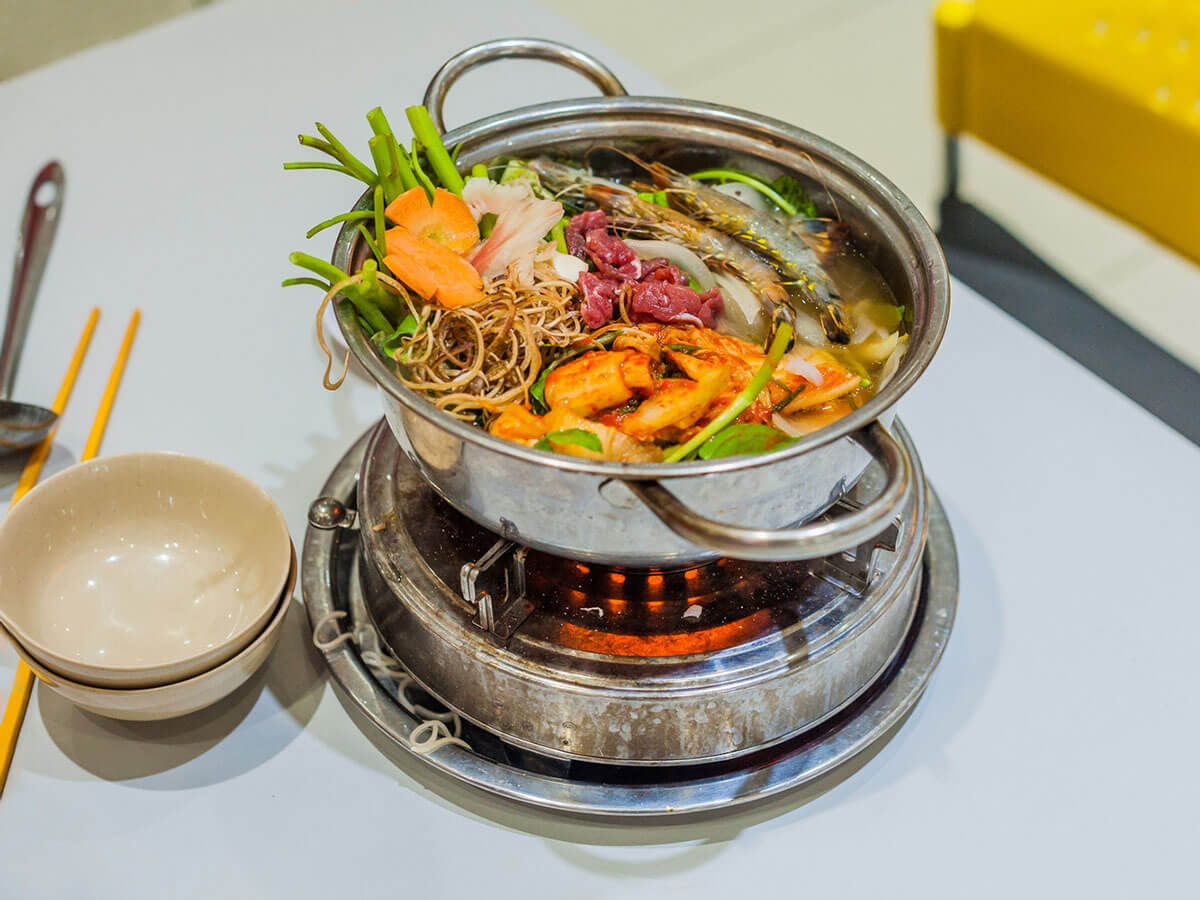


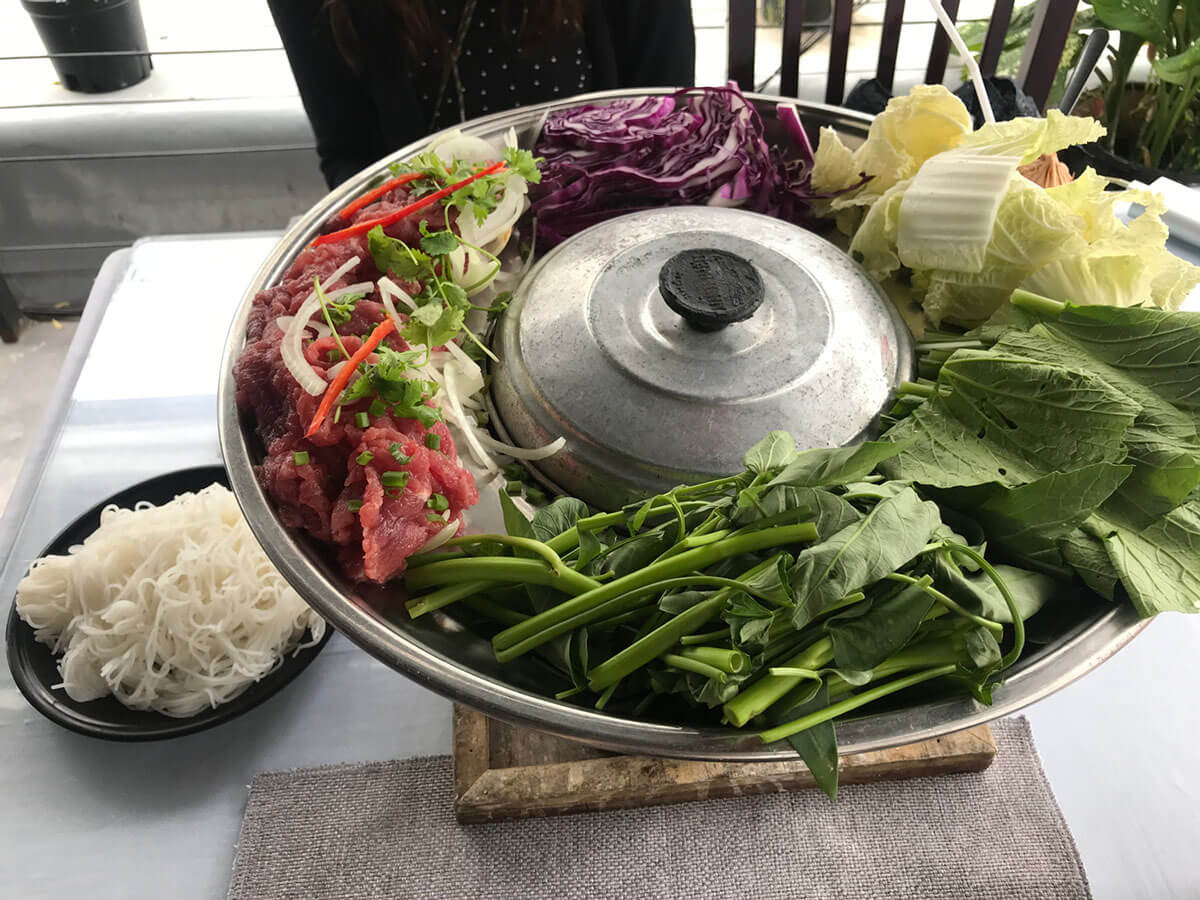

Truc Tran (Kris)
Senior Food Editor
Expertise
Home Cooking, Meal Planning, Recipe Development, Baking and Pastry, Food Editor, Cooking-video Maker, Vietnamese Food Evaluation Expert
Education
Truc Tran (Kris), an experienced food writer and editor, is great at exploring and describing global cuisines, from simple street food to fancy dining. In her writing, she skillfully mixes different flavors, cooking methods, and culinary traditions, showing the unique character of various cultures through their food and drinks. On azcuisines.com, Kris highlights her knowledge, especially in Asian cuisine and worldwide traditional dishes.